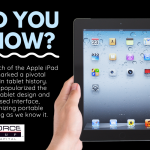Wireless Revolution: The Birth and Impact of Bluetooth in Our Lives
In an era dominated by wireless connectivity, one name stands out in the world of technology: Bluetooth. While it’s commonly associated with the seamless wireless transfer of data between devices, the origins of its name can be traced back to a Viking king. King Harald ‘Bluetooth’ Gormsson, known for uniting disparate regions, serves as a fitting namesake for the technology that has united our devices through wireless connectivity.
This blog post takes you on a journey through the evolution of Bluetooth, from its inception to its pervasive influence in our lives. We will explore how Bluetooth emerged as a game-changing wireless technology and the profound impact it has had on various aspects of our daily existence.
The Viking Connection
In today’s interconnected world, the term ‘Bluetooth’ immediately brings to mind wireless technology. However, few are aware that its name carries historical significance. Bluetooth is named after King Harald ‘Bluetooth’ Gormsson, a Viking ruler known for uniting regions. It’s a fitting namesake for the technology that has united our devices through wireless connectivity.
The Inception of Bluetooth
The Bluetooth we know today had humble beginnings in the late 20th century. In 1994, a group of engineers at Ericsson, a Swedish telecommunications company, embarked on a mission to simplify wireless communication. They aimed to create a standard for short-range wireless connectivity that would replace the tangled mess of cables and wires.
Bluetooth Takes Center Stage
The first Bluetooth specification was released in 1999, marking a significant step towards a wireless revolution. It allowed devices to communicate with each other without the need for physical connections. This technology quickly gained momentum, finding applications in various industries, including telecommunications, automotive, and consumer electronics.
Bluetooth in Our Everyday Lives
The impact of Bluetooth on our daily lives cannot be overstated. It has transformed the way we connect and interact with our devices. Here are some of the key areas where Bluetooth has made a significant impact:
Wireless Audio: Bluetooth enabled the rise of wireless headphones, earbuds, and speakers, giving us the freedom to enjoy music and podcasts without being tethered to our devices.
Smartphones and Accessories: Bluetooth technology is at the heart of many smartphone accessories, such as wireless keyboards, mice, and fitness trackers. It also powers the connection between smartphones and smartwatches.
Connected Homes: In the era of the Internet of Things (IoT), Bluetooth plays a crucial role in connecting and controlling smart home devices, from lights and thermostats to door locks and security cameras.
Automotive Industry: Bluetooth is a standard feature in modern cars, allowing drivers to make hands-free calls, stream music, and connect to navigation systems without the hassle of cables.
Healthcare: Bluetooth-enabled medical devices, like heart rate monitors and blood pressure cuffs, have made it easier for individuals to monitor their health and share data with healthcare professionals.
Bluetooth’s Ongoing Evolution
As technology advances, so does Bluetooth. Over the years, it has evolved to meet the demands of an ever-connected world. The latest iterations, such as Bluetooth 5.0 and Bluetooth LE (Low Energy), offer improved range, speed, and energy efficiency. These enhancements open the door to exciting possibilities, including:
IoT Expansion: Bluetooth’s low energy capabilities make it ideal for IoT devices, enabling seamless connections between a wide range of sensors and smart gadgets.
Audio Quality: With advancements in audio codecs, Bluetooth audio quality has improved significantly, making it a viable option for audiophiles.
Location Services: Bluetooth beacons and proximity sensing allow for precise indoor location tracking and navigation.
Mesh Networking: Bluetooth mesh networking enables devices to form interconnected networks, enhancing reliability and coverage in larger spaces.
Smart Home Integration: Bluetooth’s ability to work seamlessly with voice assistants like Alexa and Google Assistant enhances the smart home experience.
In conclusion, Bluetooth has come a long way from its Viking-inspired origins. Its evolution has not only simplified our lives but also fueled innovation across industries. As we continue to embrace wireless technology in our daily routines, it’s important to recognize the historical significance and the transformative impact of Bluetooth – a technological marvel that truly unites our world.
Sources:
- “A little history of Bluetooth” – Android Authority: https://www.androidauthority.com/history-bluetooth-explained-846345/
- “Bluetooth Technology Overview” – Bluetooth: https://www.bluetooth.com/learn-about-bluetooth/tech-overview/
- “Bluetooth Low Energy (BLE) and the Internet of Things” – THE OIT Pad: https://theiotpad.com/bluetooth-low-energy-and-internet-of-things/
- “Harald Bluetooth” – Wikipedia – https://en.wikipedia.org/wiki/Harald_Bluetooth
- “Bluetooth” – https://en.wikipedia.org/wiki/Bluetooth
- “Harald Bluetooth: The Viking Who Gave His Name to Wireless Technology” – https://www.thecollector.com/harald-bluetooth-viking-technology/





